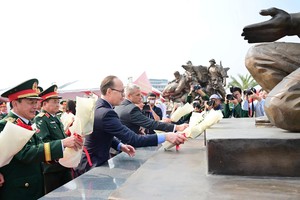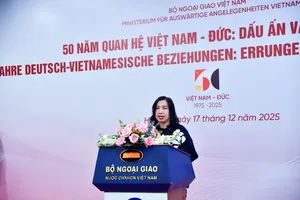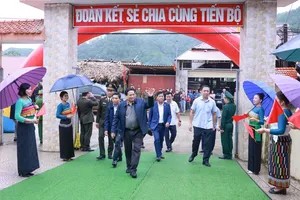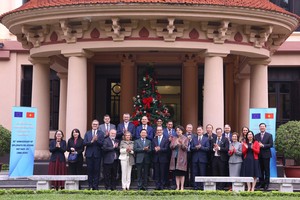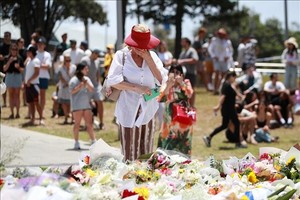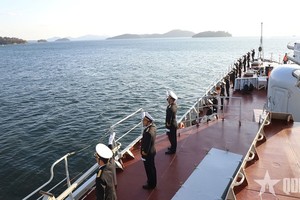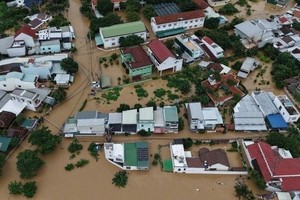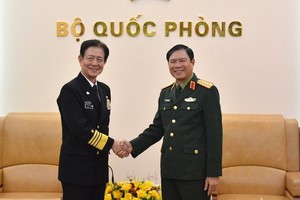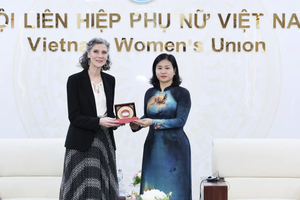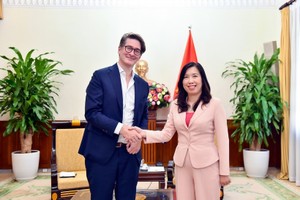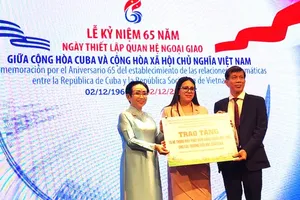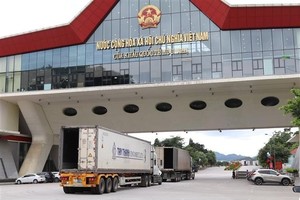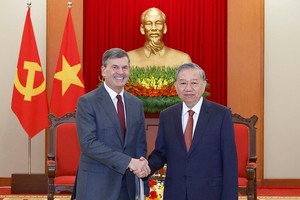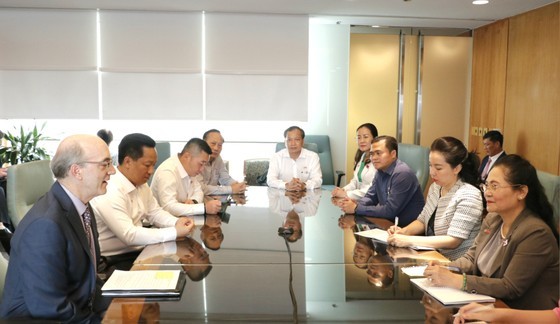 |
The HCMC delegation visits the Smithsonian Institution. |
On August 25 (local time), a delegation from Ho Chi Minh City, headed by Mrs. Nguyen Thi Le, Deputy Secretary of the HCMC Party Committee cum Chairwoman of the HCMC People's Council, arrived in the capital city of Washington DC to begin their official visit and working trip to the US.
Throughout the day, the delegation visited the Smithsonian Institution and the Vietnamese Embassy in the US.
Greeting the delegation, Mr. Benjamin Filene, Deputy Director of Public History at the National Museum of American History of the Smithsonian Institution, shared that the Smithsonian Institution is the world's largest complex of museums, education and research centers established by the US Government in August 1846, named after its founding sponsor, the British scientist James Smithson.
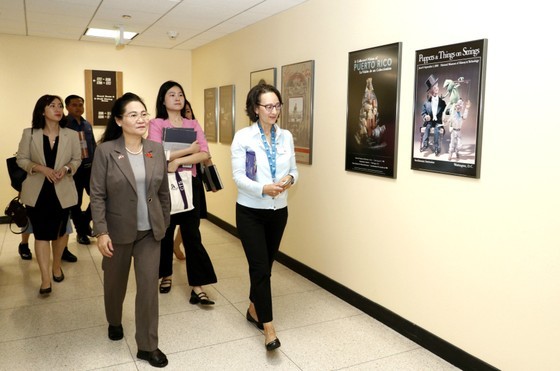 |
The HCMC delegation learns about the operations of the National Museum of American History under the Smithsonian Institution. |
At present, the institution comprises 21 museums, 21 libraries, a national zoological park, and 14 research and educational centers and preserves over 157 million artifacts. Additionally, the institution establishes cultural heritage rescue initiatives to enhance capabilities for disaster prevention and emergency response, aiming at recovering affected cultural heritages globally.
In the course of the working session, both sides exchanged and shared insights related to heritage management and conservation, the development of cultural institutions, as well as traditional history education, with the goal of making museums more accessible to students.
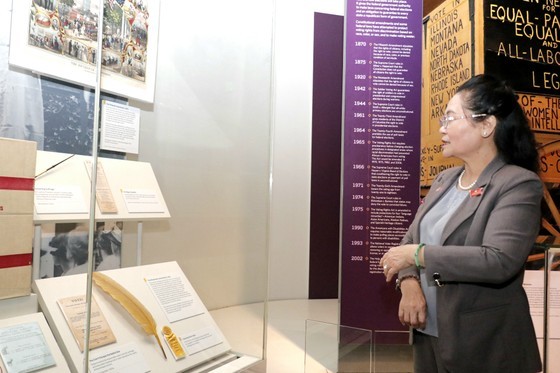 |
Mrs. Nguyen Thi Le explores artifacts at the National Museum of American History in Washington DC. |
Mrs. Nguyen Thi Le, Chairwoman of the HCMC People's Council, highly appreciated the Smithsonian Institution's invaluable role as the world's largest complex of museums, educational hubs, and research establishments in enrichment and distribution of knowledge, along with the preservation of both American and global heritage. In addition, it entails exploration, study, and sharing of intellectual resources in history, culture, art, and science.
Mrs. Nguyen Thi Le expressed her gratitude to the Smithsonian Institution for its contribution in showcasing Vietnam's country, people, history, and culture to the worldwide audience. She highlighted that several photos of Vietnam in general and HCMC, in particular, had consistently advanced to the final stages of the Smithsonian Photo Contest organized by the Smithsonian Institution.
Mrs. Nguyen Thi Le shared that, at present, HCMC is home to 12 museums with diverse functions and specializations. However, the majority of these institutions are primarily dedicated to preserving heritage, conserving artifacts, and facilitating research and have not fully transitioned into vibrant centers of learning or captivating destinations for both local and global visitors. Additionally, HCMC is actively striving to improve and elevate the quality of the personnel engaged in museums and cultural centers amid the context of digital transformation.
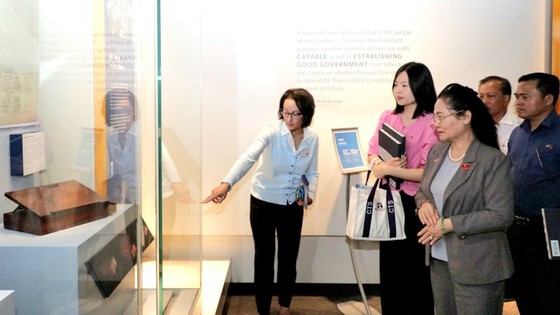 |
The HCMC delegation explores artifacts at the National Museum of American History in Washington DC. |
In addition, HCMC has recently unveiled a plan to carry out the initiative "Strategic Development of HCMC's Cultural Sector for the 2020-2035 period." The focus of this endeavor is the development of the cultural insitutions, the preservation and advancement of cultural heritage values, the digital transformation of museum activities, and the leveraging of information technology to accelerate the sustainable development of tourism. Moreover, the strategy comprises the critical tasks of restoring, safeguarding, and revitalizing historical and cultural landmarks in the city.
These are strengths of the Smithsonian Institution. Hence, this working visit seeks to draw insights from the management expertise of the Smithsonian Institution and the US in the field of heritage preservation and the development of cultural institutions.
Moreover, she hopes that the Smithsonian Institution will foster connections with museums in HCMC, facilitating the exchange of knowledge in cultivating the educational and tourism dimensions of such cultural institutions. HCMC also welcomes delegations from the institution to visit and contribute ideas towards the development of facilities for conservation, research, and education on culture, history, and art of HCMC.
Later that afternoon, the working delegation paid a visit to and worked with the Vietnamese Embassy in the capital city of Washington DC.
During the meeting, Mr. Nguyen Quoc Dung, Vietnamese Ambassador to the US, and Mrs. Nguyen Thi Le, Chairwoman of the HCMC People's Council, exchanged views on several matters of mutual interest.
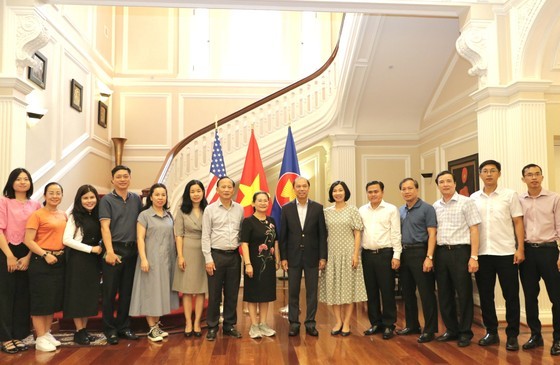 |
The HCMC delegation visits the Vietnamese Embassy in the US in Washington DC. |
The delegation's visit takes place during the time when the bond between the two nations is being tightened by numerous high-level visits by leaders from both sides with the determination to elevate bilateral relations to new heights, especially in the fields of science and technology, human resource development, as well as art and culture. The favorable shifts in the bilateral relationship are attributed to the proactive engagement of the Vietnamese Embassy in the US.
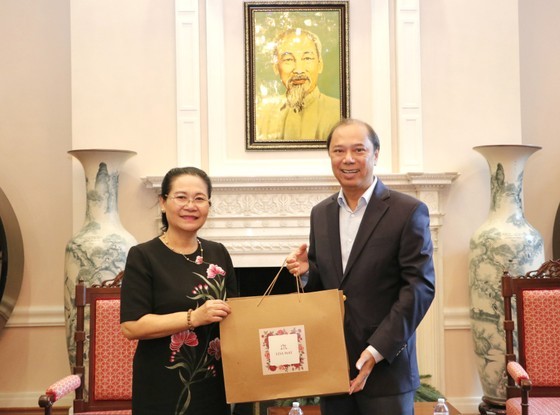 |
Mrs. Nguyen Thi Le presents a souvenir gift to Mr. Nguyen Quoc Dung, Ambassador of Vietnam to the US. |
On August 26, the delegation was scheduled to move to New York City to extend their official working visit in the US.


